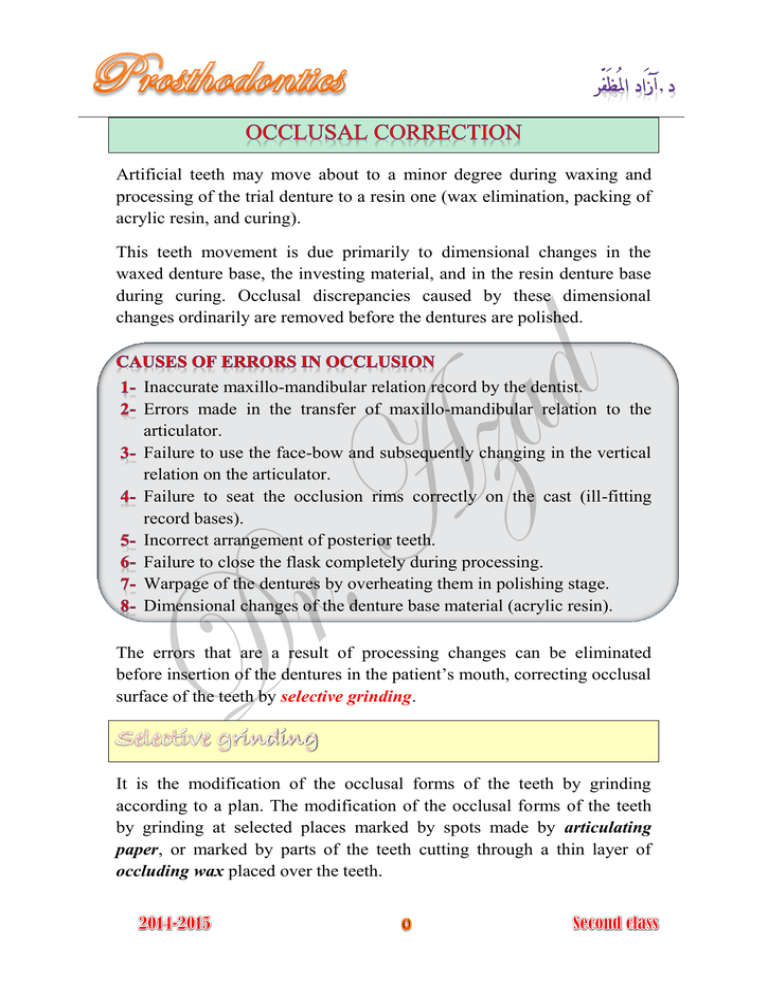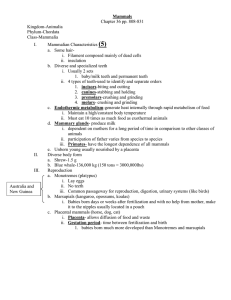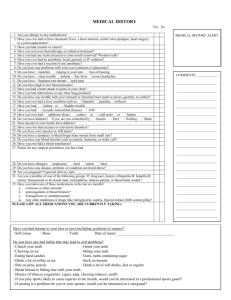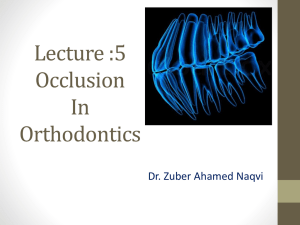Document 12822782
advertisement

Artificial teeth may move about to a minor degree during waxing and processing of the trial denture to a resin one (wax elimination, packing of acrylic resin, and curing). This teeth movement is due primarily to dimensional changes in the waxed denture base, the investing material, and in the resin denture base during curing. Occlusal discrepancies caused by these dimensional changes ordinarily are removed before the dentures are polished. Inaccurate maxillo-mandibular relation record by the dentist. Errors made in the transfer of maxillo-mandibular relation to the articulator. Failure to use the face-bow and subsequently changing in the vertical relation on the articulator. Failure to seat the occlusion rims correctly on the cast (ill-fitting record bases). Incorrect arrangement of posterior teeth. Failure to close the flask completely during processing. Warpage of the dentures by overheating them in polishing stage. Dimensional changes of the denture base material (acrylic resin). The errors that are a result of processing changes can be eliminated before insertion of the dentures in the patient’s mouth, correcting occlusal surface of the teeth by selective grinding. It is the modification of the occlusal forms of the teeth by grinding according to a plan. The modification of the occlusal forms of the teeth by grinding at selected places marked by spots made by articulating paper, or marked by parts of the teeth cutting through a thin layer of occluding wax placed over the teeth. Two methods are generally used in correcting errors due to processing changes, in both the occlusal surfaces of teeth are altered by selective grinding: Intraoral (inside patient mouth, clinically). Extraoral (on the articulator, in the laboratory). It is difficult to see the errors because the soft tissues will be distorted and obscure the errors. The denture bases will be shift in relation to the underlying bone when there are errors in occlusion due to the resiliency of the soft tissue. The articulating paper marks are likely to be incorrect due to the presence of the saliva. The central of jaw position depends entirely on the ability of the patient to place and move jaw correctly. Easily visible. Easily located. Easily corrected by selective grinding. The articulating paper marks can be quite easily made on dry teeth. Make the correction away from the patient thus there is a psychological advantage. Articulating paper and occluding wax can be used to detect the premature contacts, although it is preferable to use occluding wax because premature contact will cause the cusps to penetrate through the wax indicating heavy contact is present. An alternate method to correct the occlusion before removal the dentures from the casts 1- Replace the upper and lower mounting casts and the dentures on the articulator. If processing changes in occlusion have occurred, they must be corrected. Figure (13-1) 2- Reestablished the vertical dimension of occlusion at this time, an opening in the vertical dimension can be noted by corresponding opening in the relationship of the incisal pin to the incisal table. The pin should contact the table. Figure (13-2) If excessive opening between incisal pin and incisal table, the flask do not correctly closed. If the incisal pin touches the incisal table, the denture may have been under packed. If there is 1-1.5 mm of incisal pin opening, proper technique have been followed through the investing and packing procedures. Figure (13-3) 3- Refine and equalize the centric occlusion. 4- Perfect the working and balancing occlusions. 5- Correct the protrusive occlusion. Never grind a centric cusp tip unless it contacts prematurely in all excursions of the mandible. Always grind the opposing fossa. (i.e. if the cusp is premature contact in centric relation and is also premature in balancing or working, then the cusp should be reduced; if the cusp is in premature contact in centric relation, but is not in working or balancing prematurity, then the opposing fossa or marginal ridge should be reduced). Figure (13-4) Utilize the (BULL rule) when perfecting working occlusion prematurity, grind the lingual incline plane of the Buccal cusps of the Upper teeth, or the buccal incline plane of the Lingual cusps of the Lower teeth. BULL rule applies working side only. Figure (13-5) W B If there is a premature contact on the balancing side, then adjust the buccal incline plane of the lingual cusp of the upper teeth, or the lingual incline plane of the buccal cusp of the lower teeth. When grinding to perfect balancing occlusion prematurity, never grind the interfering cusp tips but grind the cusp inclines. Usually this done in the mandibular teeth, do not adjust both maxillary and mandibular teeth, the centric maintaining cusps should be preserved (they are the lingual cusps of maxillary second molars). Figure (13-6) W B In correcting protrusive interference in the anterior teeth grind the labial portion of the incisal edges of the mandibular teeth and the lingual portion of the maxillary teeth. For protrusive interference in the posterior teeth, reduce the distal slopes of the upper buccal cusps, or the mesial slopes of the lower lingual cusps. Figure (13-6) P Selective grinding of balanced lingualized occlusion is similar to a fully balanced occlusion with exception that only the lingual cusps of the maxillary teeth or their antagonist surfaces are adjusted. Selective grinding of non-anatomic teeth (lingualized occlusion): Excessive care to maintain the occlusal surfaces of the mandibular arch on a plane. The occlusal surfaces of the maxillary posterior teeth are altered to make harmonious contact on the right side and on the left side when the jaws are in centric relation. Smooth gliding movements from the centric position to the eccentric positions should be developed.







